The story goes that an Arab merchant made the first cheese when he set out across the desert with a supply of milk stored in a sheep’s stomach. The unassuming vessel contained rennet — a mixture of enzymes that can be found in the fourth stomach of many ruminants including cows, goats, and sheep. For a baby animal, the enzymes help with the digestion of the mother’s milk, and when added to milk, rennet will help the milk coagulate and separate into solids (curds) and liquid (whey). The first cheese was likely made by accident, but for thousands of years (nearly as long as humans have domesticated dairy animals), there has been cheese on purpose.
Making cheese is as much an art as it is a science. As soon as curds and whey are separated, the cheesemaker takes the wheel — deciding whether to press the curds into fresh, moisture-rich cheese, like a soft, tangy chevre, or whether to age them, allowing time and bacteria to transform the milk further. There are even some cheeses, like ricotta, that are traditionally made from the whey itself. As the name implies, fresh cheese should be eaten quickly, ideally spread on a toothsome bagel or melted in an epic grilled cheese.
For thousands of years, aged cheese, which can last for months in a cool, dark space, was the only way to store milk, long-term. Many of the cheeses made in hot climates like the Middle East required lots of salt to make a dense, shelf-stable product. In Europe, where climates were more temperate, aged cheese required less salt (as well as less added acidity), two factors that created a perfect home for molds and microbes to do their work. It’s this biology which gives aged (fermented) cheeses their flavor, complexity, and character.
Speaking of character, have you met your Texas cheeses? Unfortunately, there’s no consolidated list of Texas craft cheese makers. And while we don’t know the exact number of Lone Star milk magicians, we do know that there aren’t that many, at least considering the size of the state.
Antonellis, a well-known specialty cheese shop in Austin, carries products from about 10 Texas producers, and Houston Dairymaids, another specialty shop, carries cheeses from 9. One cheese producer we talked with estimated that there were only 20-25 producers in the state (compared with over 300 craft breweries statewide). Producing good cheese, especially a farmhouse cheese — one that is produced at the farm where the dairy animals are raised — requires good milk. Good milk is a product of good pasture and healthy animals. The soaring price of farmland close to market centers, expensive dairy/cheesemaking startup costs, and current drought conditions render Texas cheesemaking a challenging industry, and within the past 12 months, several beloved makers have had to shutter their barn doors under the pressure.
Alas, farmers prevail and cheese is a powerful force. Here in Central Texas, the cheese does not, in fact, stand alone. Allow us to introduce you to three Hill Country producers.
Pure Luck Dairy & Farm
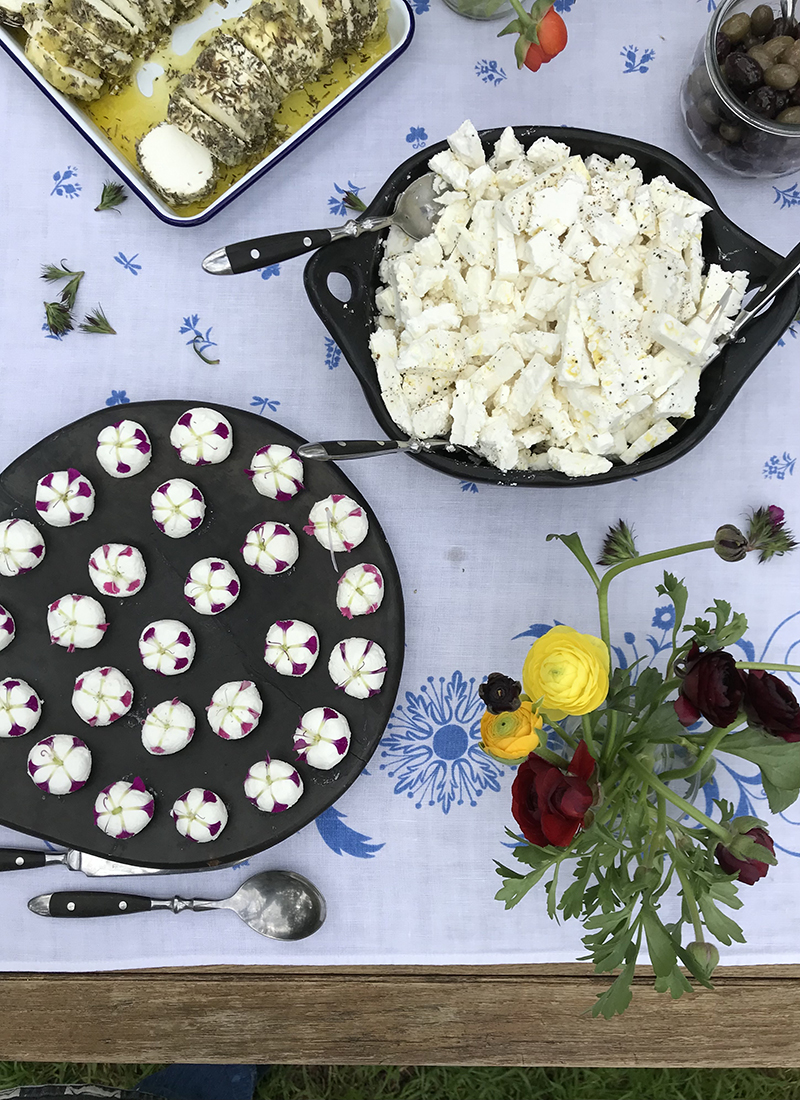
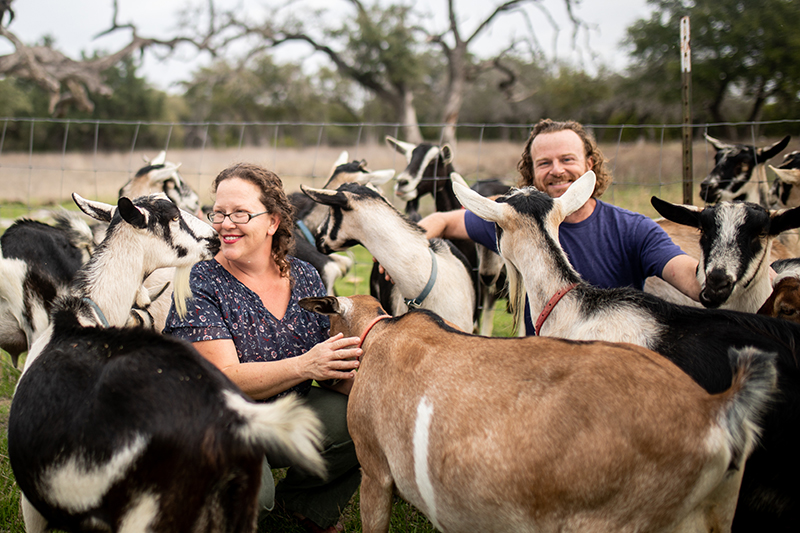
In 1995, Sara Sweester and her husband, Denny, filed paperwork to become a Grade A Goat Dairy, transforming their Hill Country homestead into a family-run enterprise. Three years after cheese production began, one of Sara’s 4 daughters, Amelia, joined her mom, and 25 years later, Amelia still walks in those footsteps. “We’ve been doing it so long. And if I’m anything, I’m extremely consistent,” Amelia says when I ask her the latest at Pure Luck, “You know, to ask me what’s new is kind of a dead end,” she laughs.
The legacy Amelia upholds is defined by a deep love of her dairy herd, and an affinity towards award-winning fresh-basket, tangy and spreadable chevres as well as aged cheeses, like their “Hopelessly Blue,” a seasonal, blue-veined cheese that is mild and creamy, lacking the intense funk that deters some.
There are two varieties of goats that make up the Pure Luck heard — Nubians and Alpines — and each of Pure Lucky’s roughly 67 does has a name, my favorite being “Puppy Dog.”
Nubians have long floppy ears and convex noses and come in a dazzling array of colors and spots. It’s a docile and friendly breed, that produce rich milk. Alpines, which constitute the majority of the Pure Luck herd, are a rowdier bunch.
“I adore Alpines. They tend to be a little bit more,” Amelia pauses to find the descriptor, “I often use the word aggressive. But they’re not like beating each other up, but they’re like: ‘I’m coming in! It’s time to milk! Let me through!’ I just get along with [alpines] really well.” I wonder aloud if I can visit the dairy and see these assertive goats in action, and Amelia kindly extends the invite, “It’s a really precious thing, kind of like a little show. They all are so smart and so willing. And [they] really love the process of following their every pattern… everyone’s got to do their thing, which is entertaining.” She goes on a little later, “I love waking up with that heard every day and seeing their ridiculous antics. They come in, and leave, and present their personality traits.”
In a large tank that can hold 300 gallons of milk, Nubian and Alpine milks get blended before made into around 500 pounds of cheese a week. Amelia works with a small team, including her husband, to see the process through. In addition to helping with the actual cheesemaking, Amelia is in charge of the milking, and she laughs as she explains the covenant she seems to have formed with her animals, “There’s some kind of toughness that goes along with goat milking. They have an order, and it works really nicely if you’re willing to be the top of that order.”
River Whey Creamery
Susan Ring is in her ninth year of owning and operating River Whey Creamery, a career that is a dramatic plot twist from her previous experience in book retail. Susan always loved food, and in 2007 after a session with a life coach, she decided to take a leap, quitting her job and enrolling in a three-year program at the Culinary Institute of America (CIA) at its Hyde Park, New York location. After graduation, she ran South Texas’s Slow Food chapter, a harbinger for the slow, thoughtfully aged cheeses to come.
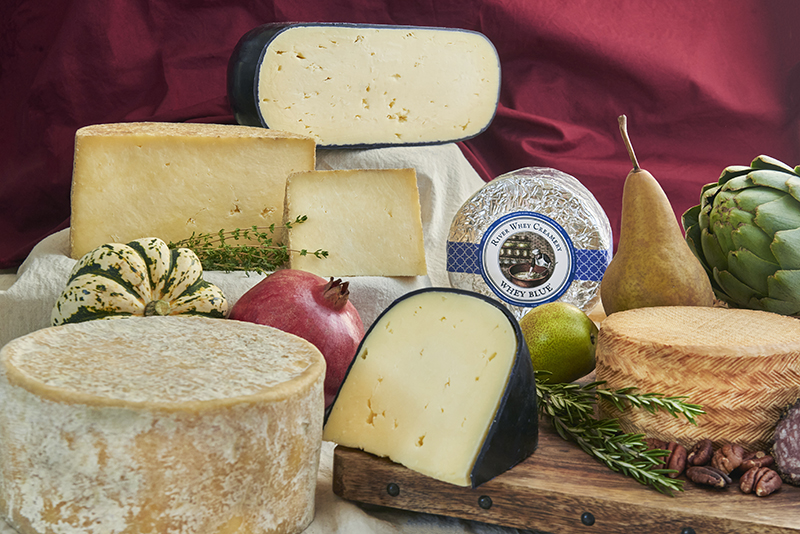
River Whey cheeses are made from raw milk of Jersey cows, which Susan sources almost exclusively (over 95%) from 4 E Dairy in Moulton, south of I-10 near Schulenberg. She and her team turn this rich milk into a variety of aged as well as seasonal fresh cheeses… over 400 pounds a week. In addition to being loaded with probiotics, raw milk and raw milk cheeses have other benefits. “If you pasteurize the milk, you basically start from a blank slate. So any cultures that you want, you have to add back. The advantage from a cheesemaking point of view is that when you use raw milk, you have all those indigenous cultures that are already existing in the milk. And those are all the good cultures, right?” Susan asks to make sure I’m understanding her enthusiasm. Cultures “that are good for your gut, and everything else, you are saving those, if you will.” Like a seed saver, Susan and River Whey are passionate about using raw milk for their cheese. “I honestly don’t think that I would be a cheese maker if I didn’t do raw milk cheeses. It’s that important — from flavor profiles to the terroir, that chef thing — that taste of place that matters so much. And the other thing is all our cheeses are all specific to us. None of them have any names that you would know from another type of cheese. I wanted to make iconic cheeses that would stand on their own.”
River Whey’s most popular cheese is their aged Indigo Ridge, which launched in 2017. It’s a flavorful Gouda/Gruyere hybrid that has been aged in their “cave” for 8 months and constitutes over half of their overall sales. Another favorite cheese is their Whey Blue, which Susan affectionately referred to as their “Covid baby.” Seasonally, River Whey puts out fresh cheeses as well as marscapone — the sweet Italian cheese that you use to make tiramisu, and a product that they decided to produce to help use up the extra cream they had. They also have a Spanish-style cheese called Caldera which Susan describes as “a total flavor bomb. It’s basically bacon in cheese form. I mean, it’s so bacony. And we use pecan wood to smoke that with because pecans are local here.”
In addition to cheese production, River Whey has become a beloved destination because of the cheese classes and facility tours it offers. Like Susan, over half of her tight-knit staff are CIA graduates as well, and education seems like a passion for the team. “People that come and see what we’re doing, they all say, ‘I had no idea how complicated it is, how much science there is , how labor intensive it is!” The other question Susan gets from visitors? What’s her favorite cheese. And I’m like — you’re asking me to pick one of my kids. You know, it’s not gonna happen. It depends on the mood, on the day, on the weather. On what wine I’ve got in my glass right now.”
Orobianco Creamery
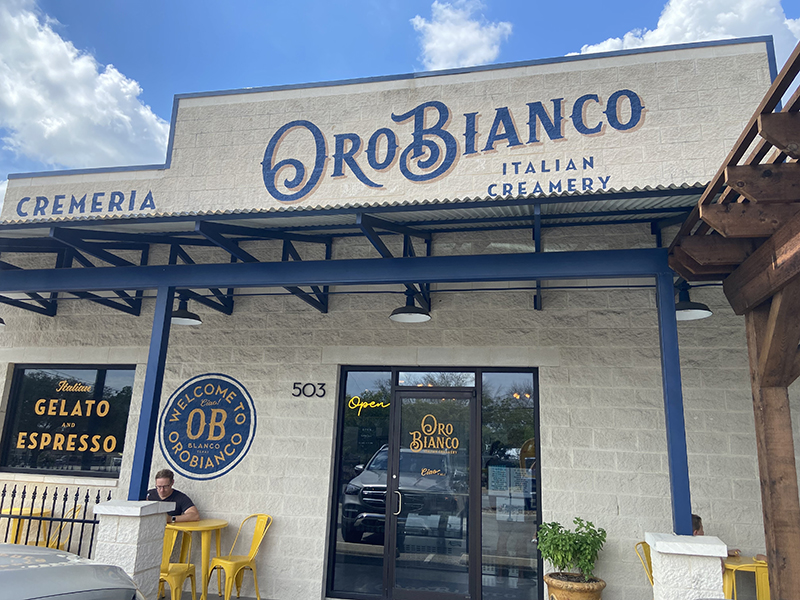
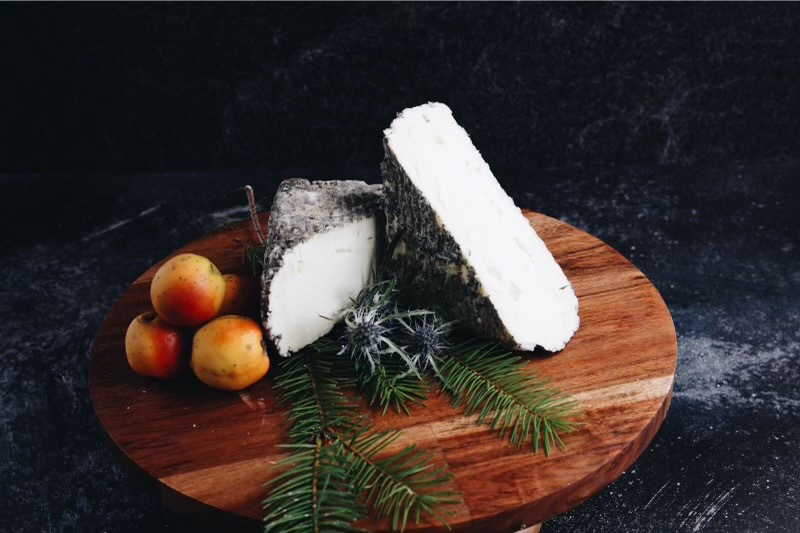
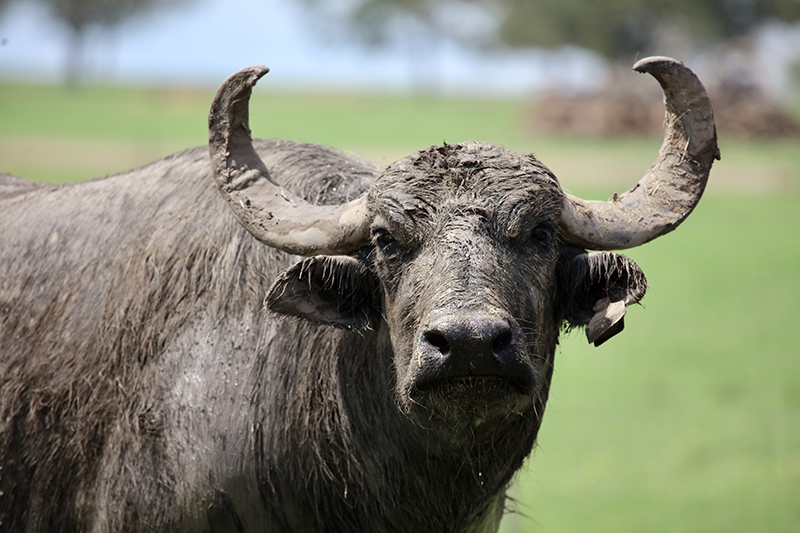
Sometime in 2018, Phil Giglio left Chicago where he was working full time as a corporate attorney, to chase down a dream of making mozzarella…with the milk from water buffalo. (In case it isn’t clear: water buffalo is a completely different animal than the American Bison, who would not cooperate in a milking stall.)
“My family is from, and I spent time as a young adult, in the region [of Southern Italy] from which the famous mozzarella di bufala originates,” Phil told me, “and I wanted to bring that and other water buffalo milk-based cheeses and gelato to Texas.” Phil teamed up with Jason Peeler, a rancher in Floresville who serendipitously was caring for a hulking herd of water buffalo, and together they launched Texas’s first water buffalo dairy, OroBianco, or “white gold” in Italian.
In early 2021, cheesemaker Adam Thompson joined Phil and Jason, and around the same time, OroBianco opened its customer-facing creamery and production facility just off the town square in Blanco.
Unlike cows, water buffalo haven’t been aggressively bred for milk production in the U.S. The head of Oro’s roughly 350 animals yields about 600 gallons of milk a week. To anyone in the dairy industry, this might seem shockingly low until you learn that water buffalo milk is 10% butterfat (compared to an average dairy cow, which is about 5%). “One of the biggest differences is the fat content. Every cheese we make is double cream cheese. Anytime you see a double cream Brie or something like that, they’re basically adding cream to the milk to get that fat percentage up. So when you start out with a 10% butterfat milk, you’re gonna end up with a 24% plus…It makes a much better, a much creamier cheese,” Adam assures me.
Some of the first cheeses Adam made for Oro’s new cheese program were big wheels of gouda and piccante (like sharp provolone) style. “We’re still opening some of those cheeses up that are 16 months aged,” Adam tells me, “and everything we opened is beautiful, you know, at that age, with that fat content, that just makes great cheese.” Adam is currently producing around five cheeses that are for sale to the public (with plenty more testing and ideas to come).
When you’re a cheese startup like Oro, creating new cheeses in a new setting, you get to choose your names, and OroBianco has done so playfully. There’s the Bluebonnet, which is a blue-rinded cheese with a funky, but not overpowering flavor. “That’s our gateway blue,” Adam tells me. There’s the Ladybird, which Adam describes as “a bloomy rind cheese, like a younger brie.” After aging for 10 or 11 weeks, the Ladybird is full cream, and slightly sweet. There is also a feta-style cheese that’s marinated in Texas olive oil, a perfect accompaniment to salads.
Adam currently makes one fresh cheese, their Blanco Fresco, which is soft and spreadable, and as for mozzarella, it’s coming. “As simple as it is, it’s still tricky,” Adam tells me when referring to water buffalo mozzarella, “it’s a totally different chemistry than say, milk from a Jersey.”
OroBianco’s future plans include a fresh mozzarella. “It will be made fresh and sold right then. We have no intention of refrigerating it and selling it the next day. It’s just going to be like a barbecue place, that we’ll sell it till it’s out, and that’s it.”


